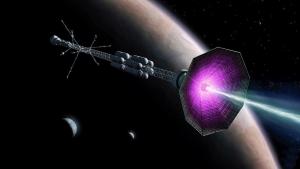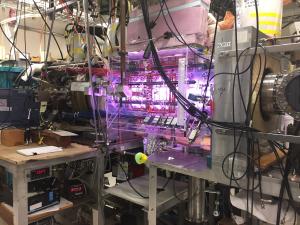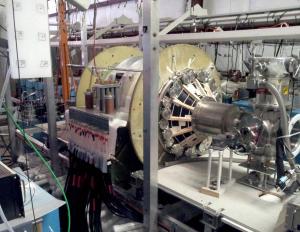One of the problems is that tokamaks, the most promising of fusion devices in the present state of fusion technology, are all but compact: at 23,000 tonnes (not counting the mass of plant systems), ITER would be difficult to put into orbit.
A fusion reactor, however, is not necessarily a tokamak.
A NASA-funded joint venture between the University of Washington in Seattle and a small company named MSNW LLC focused on the development of advanced space propulsion systems has developed a small field-reversed pulsed-fusion device (akin to the
spheromak concept of 1980s-1990s) to be extrapolated into a "fusion drive engine." Promoters of the project say that they are at work
building the components of "a fusion-powered rocket aimed to clear many of the hurdles that block deep space travel, including long times in transit, exorbitant costs and health risks."
In a similar move, the Princeton Plasma Physics Laboratory (PPPL) has entered into a collaboration with a company called Princeton Satellite Systems to work on a
direct fusion drive engine for space exploration. Two years ago, NASA
awarded a half-a-million dollar grant to the venture, which was also
distinguished by a US Federal Laboratory Consortium award in October last year.
In the projected direct fusion drive engine, fusion power would not be produced by the deuterium/tritium (DT) reactions of ITER or future electricity-generating plants. While the DT reaction is the most accessible in today's state of technology, it has two significant drawbacks, particularly for manned space exploration. Tritium is a radioactive element, and the fusion reactions produce a flux of highly energetic neutrons from which humans and electronic equipment must be heavily shielded.
The deuterium/helium-3 reaction that is planned for the direct fusion drive engine has neither of these limitations: both elements are stable and so are the reaction products, hydrogen and helium. As the reaction is "
aneutronic," no heavy shielding would be required for protection.
There is, however, one big catch: the temperature required to fuse deuterium and helium-3 nuclei is about ten times higher than that required for DT fusion and no device has yet achieved this level of energy. (The present record is held by the Japanese tokamak JT-60U, which reached an ion temperature of half-a-billion degrees.)
The developers of the direct fusion drive claim that their engine could be operational
as early as 2028, which might appear to be a wildly optimistic projection. It might take decades before fusion propulsion quits the realm of science fiction and enters the reality of space travel.
But among space-faring nations there is now a consensus, which the Department of Aeronautics and Astronautics at Washington University, one of the top aerospace schools in the United States, has
clearly formulated: "Fusion energy is, in principle, the only conceivable source of energy for rapid, efficient, rocket space travel to Mars, the outer planets, and nearby stars."




